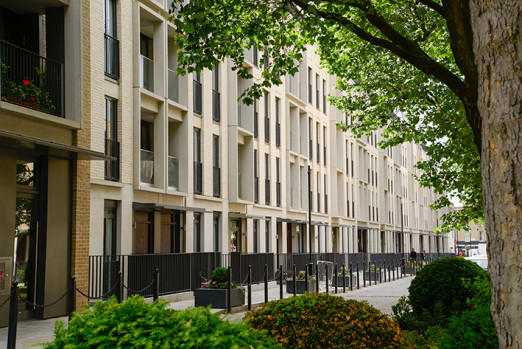One of the first and most symbolic of shifts to ‘remaking the street’ was the regeneration of this notoriously disadvantaged district of Glasgow. Starting in the mid-1990s, phases of low-rise housing masterplanned and partly designed by CZWG were implemented, replacing one of the most iconic of modernist housing estates.
The demolition of Hutchesontown C, a Brutalist high-rise complex by Sir Basil Spence, came after attempts to save the neo-Corbusian blocks through refurbishment and despite conservationist pressures. Spence famously pitched his design in highly poetic terms: ‘on Tuesdays, when all the washing’s out, it’ll be like a great ship in full sail’. But this vision sank quickly under the reality of social deprivation, poor maintenance, and design failures. The spectre of failure haunted the demolition, during which a spectator was killed.
In its place came several phases of development, including CZWG’s Crown Street plan and housing, which went on to win numerous awards. A decade later the same architects completed Queen Elizabeth Square, a refinement of their approach, with mixed low and mid-rise buildings around the streets and greatly improved public realm.
Client: Scottish Development Agency and Cruden Estates Architects: CZWG






